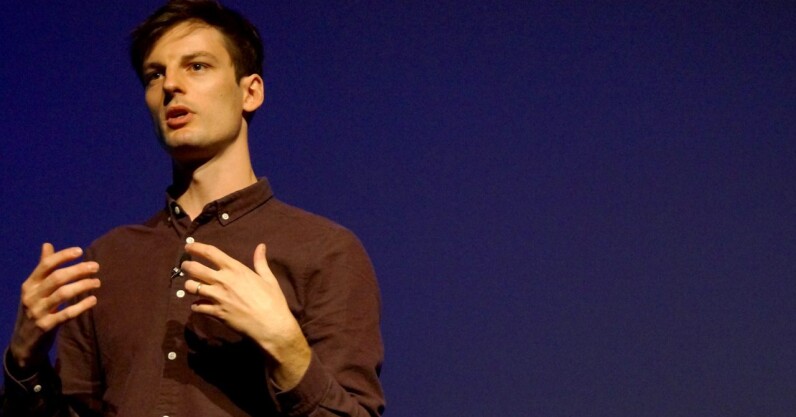Why don’t we leave the internet platforms we dislike?
The internet is filled with sites and services we loathe yet it seems, to paraphrase Brokeback Mountain, we just don’t know how to quit them.
Consider the evidence: Facebook was widely reviled after its role in the Cambridge Analytica scandal, yet it still has over 3 billion monthly active users. Since Elon Musk’s takeover of Twitter there has been huge public outcry about his actions and decisions, but the platform remains relevant. And, most recently, Bandcamp was bought by Songtradr which swiftly laid off 50% of its staff. But guess what? It’s still by far-and-away the leader in its category.
This points to an environment where big platforms can act in ways swathes of people find distasteful, yet still remain in dominant positions. The more things change, the more they stay the same. For companies trying to upend this hegemony and Silicon Valley’s grip on the tech world, it could feel disheartening.
But here at TNW we had some questions: is all this necessarily true? Are certain sites really too big to fail? And could smaller companies use burgeoning tech like decentralisation to fight back against the might of Silicon Valley?
Well, we’re going to find out. Let’s begin by looking at a specific example: Bandcamp.
The battle for our ears: Bandcamp and Artcore
If you aren’t familiar with it, Bandcamp is a music retail platform. Think of it like an online record store where artists can sell their music and merchandise.
Widely beloved by fans and musicians alike, Bandcamp has a reputation for being artist-friendly. It offers good cuts on sales and runs schemes like Bandcamp Friday, where it waives commission fees. Long story short, Bandcamp is one of the few places in this current music environment where artists can actually make some money.
Yet like all good things on the internet, it couldn’t last. The platform was purchased by Epic Games in 2022 before being bought up by Songtradr this year. After getting rid of a gamut of staff, it became clear to many users that the days of Bandcamp as an artist-first haven are coming to a close.
In many ways, the platform is ripe for a competitor. Its audience consists of people who value independence as a concept and it has a user base in the tens of millions rather than billions. Yet that hasn’t happened.
To dig into the reasons, I got in touch with one of these competitor platforms, the just launched London-based Artcore. In many ways, it offers a broadly comparable service to Bandcamp: a place to sell music with relatively manageable commissions fees (20% in this case).
I spoke with Tom Burnell, Artcore’s founder, about the challenges of trying to take on a much bigger platform. He tells me that “building any startup is a challenge,” but he wouldn’t be go into further detail about their battle with Bandcamp.
Despite a request, Burnell didn’t share users numbers or sales figures, but a quick check on Similarweb (which is only a rough estimate), put Artcore’s visitors to its website at around 30,000 in October of this year. While the site is growing, it’s not going to be challenging Bandcamp any time soon.
The question then is why? What would need to happen for Artcore and other such challenger platforms to usurp the current status quo?
David vs. Goliath: A tech tale
“Smaller companies and startups have to first cut through the noise to raise awareness of their offering, which takes time, effort, and considerable resources,” Matt Iliffe, CEO of Beyond tells me. Beyond has worked with businesses including Google, Snap, and YouTube in order to optimise product experiences.
Alongside this, Iliffe believes many smaller companies fail to compete is down to public perception. There’s “safety in established platforms,” he tells me.
Effectively, better the devil you know than the one you don’t.
This explains why competitors to the likes of Twitter/X, Facebook, and Bandcamp struggle to gain traction: they need to spend huge amounts of money to capture an audience that’d rather keep using a product they’re familiar with.
The question, then, is beyond spending billions of euros, how can a smaller company compete with the might of established bodies?
“A new platform must be ten times better than the one it hopes to win users from. Or be radically new,” Nicki Sprinz, Global MD of ustwo tells me. Their business helps create and design new products, something it’s done with the Peloton Lanebreak and The Body Coach.
The problem is, Sprinz explains, that huge tech companies are “too big to fail” when the platforms trying to compete with them do a similar thing with a near identical business model.
What this means is a service attempting to be another version of Twitter or Bandcamp won’t succeed. It needs to look beyond being a copycat.
But there’s hope: “Technology is today’s agent of creative destruction,” Sprinz says.
Smaller companies can challenge huge business, but they need to be doing something noticeably different in order to take away market share, whether that’s offering a new user experience or utilising the latest technological advancements.
It makes sense: Facebook didn’t upend MySpace by copying it, it did so by creating something that was noticeably different.
Now one of the technologies that’s offering a way of doing things differently is decentralisation. The question is whether it could be the remedy for smaller businesses to fight back against the biggest players?
The decentralisation question
To find out, I spoke with Martina Larkin, CEO of Project Liberty. This is a body spearheaded by billionaire Frank McCourt to build a new, decentralised internet.
Larkin tells me that the goal of decentralisation is to take “the power and control of social media out of the hands of a few platform providers and [give] it to users and developers.”
The benefit of these types of systems is they give people ownership over their information, meaning they can “take their data such as their followers from one app to another” while also connecting with people across other apps.
I asked why this shift to decentralised platforms hasn’t happened yet, and Larkin says that the technology to create these sorts of systems — such as blockchain — is only just maturing.
“People are increasingly uneasy about the way social media influences and manipulates their online presence, especially how big tech controls their data,” she says, “decentralised technology systems provide the opportunity for companies to both operate sustainably and provide a fair and equitable economic value to all participants.”
The simple life
These are excellent points and is the way I hope platforms shift in the future, but there remain two broad issues for me.
The first is ease. It’s no coincidence that Apple has become the biggest company in the world when it could broadly sum up its approach as making previously fiddly things easy. Fundamentally, that’s what people want: a simple life.
While decentralised networks like Mastodon and Bluesky are growing, they are nowhere near as user-friendly as Twitter. Until they can adequately solve that complexity — which may never be entirely the case — I feel that huge amounts of the public will not opt in.
The second point is around payments. Decentralisation may work for social media, but when there’s a platform like Bandcamp on which money is swapping hands, most people would prefer there to be a reliable middle figure.
You only need to look at how cryptocurrency has — so far at least — failed to become a de facto payment method despite huge pushes. There’s reliability in a middle man, and this is especially true when it comes to money.
It doesn’t matter whether these beliefs are logical, it’s simply the state we’re in.
Power from the platforms
What we’ve discovered isn’t rocket science: it is not easy to dislodge pre-existing online platforms with large user bases. In fact, if you’re trying to do pretty much the same thing as them, it’s nigh-on impossible to overcome that market share and attract the product.
This gives huge companies a certain amount of licence to do whatever the hell they want, users be damned. I’m certain there is a tipping point somewhere, but the fact Facebook hasn’t already found it suggests it’s pretty dark.
But don’t get disheartened — this doesn’t mean there’s no hope for change.
For upstart platforms to alter the current system, the key is they need to do something different. Whether that’s offering a new way of engaging with content (think of how TikTok reimagined YouTube) or incorporating a burgeoning technology like decentralisation.
Looking to compete with Instagram or Twitter or Bandcamp isn’t going to work. Companies need to look beyond them, to think of a new way of delivering what those platforms are striving to.
Yet this isn’t all, as simplicity and ease-of-use is king. New platforms need to show people that it is not only much better than the previous one, but it’s also just as easy to use.
Without that? Well, we probably won’t be quitting them any time soon.
Why don’t we leave the internet platforms we dislike? Read More »

























